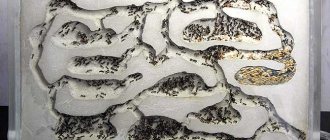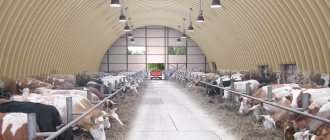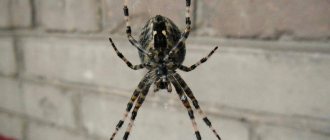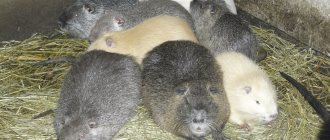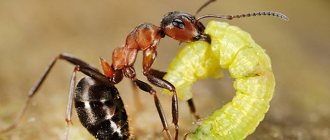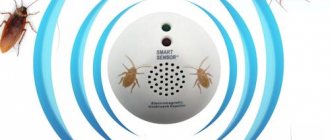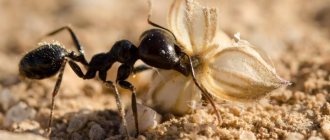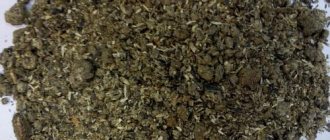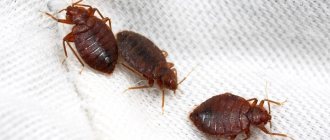Have ants as pets, but don't know how to properly care for these insects? How can a beginner provide an artificial anthill with everything necessary and create favorable conditions for the development of the colony? We will help!
To keep your formicarium full of life, it is important to consider a number of aspects:
- nutrition;
- life support;
- maintaining suitable conditions;
- insect care.
All of these are important factors on which the life of your colony directly depends.
First Settlers
When you have made your first arthropod friends, you should address the housing issue. For comfortable living, the colony must correspond to the size of the ant farm. If there is not enough space, the ants may die, and if there is a large amount of unused territory, they may collect garbage and food debris there.
Once settled, ants may behave unnaturally
– hide, do not communicate with each other, refuse food or water. This is fine. Full acclimatization takes time.
After settlement, there should be free cells left - the colony will develop and will need more space.
Watch a video on how to properly populate an ant farm:
Food delivery
Although anthills do not require constant monitoring, it is necessary to provide insects with food. Even beginners can handle this - just remove the lid and add food.
Food directly depends on the type of insect
. Some prefer other insects (mosquitoes, mealworms, crickets), others feed on plant foods.
For feeding, either small portions that are easy to consume immediately on the spot (for example, bread crumbs) or whole pieces that are difficult to carry into other compartments are suitable. Do not give insects excess food - the leftover food will simply rot and become moldy.
Also don't forget about water. Depending on the type of farm, the liquid is poured into special drinking bowls
or spreads throughout the anthill itself. Without water, the colony will die from dehydration.
Hydration
For the comfortable existence of ants, it is necessary to maintain the level of humidity. For humidification, special chambers are provided (in small ones - 1, in large ones - 2 or 3), they must be filled with water. To correctly calculate the fluid level, observe the formicarium. With excess humidity, ants are less active and try to hide. If there is insufficient humidification, condensation and water film disappear from the walls.
At first, you need to carefully care for the ant farm; for beginners, humidification chambers located away from the colony are suitable
. This will protect the insects from high humidity at first. If necessary, these arthropods will independently change their place of residence, choosing the optimal rooms.
Care
How to care for the residents on an ant farm and provide the ants with everything they need? This is not difficult - such insects do not require special housing conditions, regular changes in temperature or adjustment of indicators.
What will you need for your farm?
You need two jars with lids - one larger, one smaller (so that the second can fit inside the first). Ants and soil will be placed in the space between the small and large containers. A smaller jar is needed to leave space in the center.
The ants will be able to lay eggs at the top edge and build tunnels, and you will be able to watch this process. Airtight containers are great for “construction”. You can use them to create the desired size of farm. Please note that the jars should not have any patterns, cracks, scratches, etc. If you want your ant farm (with ants) to be flat, buy a small narrow aquarium from your local pet store.
Starter kits for beginners
Typically, an ant farm begins with an incubator tube, which plays the role of a farm for the first time, completely covering the needs of the queen and soldiers with workers for space and food. However, over time, the number of the colony grows, and a full-fledged farm becomes necessary for the comfortable existence of a large number of insects. By large we mean a population of more than 50 individuals.
Starter kits for beginners can be a solution for a novice keeper
, including a formicarium, why it is needed is described in detail above, as well as everything necessary for the first time, as well as a uterus with a colony for colonization.
Soil-sand farm
First you should prepare a mixture of sand and soil. Ants require a moist environment. This will allow little residents to dig tunnels and paths. If you collect ants in your dacha or yard, use the same soil so that when they move to a new house, they find themselves in their familiar habitat. You will need enough earth to fill the space in the jar. Loosen it well.
Mix two parts soil with one part sand. You can buy fertilized soil and sand from the gardening department and mix them well. If you buy special ants from a farm at a pet store, then the necessary mixture is included with them.
Looking for an anthill
Now you need to find “tenants” for your farm. The easiest way to find ants is outside. You will not have any difficulties with this, especially if you involve your child in this process. Small anthills are often found in yards. You can find them if you follow where the little workers are rushing with their finds. When going to collect ants, take with you gloves, a jar with a tight lid and a scoop.
Make several holes in the lid using a needle (for air access). They must be very small so that insects cannot get out. Add some honey or jam to the bottom of the jar. In this case, the ants will gather around the sweet treat and will not try to get out. Very carefully dig up the inhabitants of the anthill and move them to a jar.
Try to find the queen. You will recognize her immediately - she is much larger than the rest of the inhabitants of the anthill. An ant farm, which is populated only by working insects that live on the surface, will last no more than four weeks. This is how long these insects live in natural conditions. A queen ant that is ready to lay eggs can be found near anthills in early autumn, immediately after mating has occurred between males and females. In addition, the queen can be purchased from professional breeders. Your ant farm can accommodate 30-40 insects to start with.
Microworld on a bookshelf
This is what a formicarium is. You can spend an exciting time with him, not just one or two evenings, but many weeks and months. If you read the forums of myrmecologists, it becomes clear that they treat their colonies as an expensive and important part of life, worry if something goes wrong, and rejoice at new ants appearing in the anthill.
By class, insects are divided into foragers and soldiers, whose responsibilities include protecting the anthill and obtaining food; workers responsible for maintaining cleanliness and order; scouts discovering new territories; nannies responsible for the brood, as well as the queen, which constantly reproduces new workers and soldiers.
Fun facts:
, for every person on earth there are about a million ants; Most of the ants in the anthill are female—the males hatch separately for the breeding season and die almost immediately after it. And the anthill is a perfect example of communism, but with a monarch at its head.
Once you start studying myrmecology, it is almost impossible to quit it
. There are thousands of species of these insects, and after long observations of a colony, you begin to recognize individual individuals and look at them as if they were old friends. It is not for nothing that myrmecology has become widespread throughout the world. And recently this hobby has begun to gain popularity in Russia.
No need to be afraid: caring for an ant farm is not that difficult. All the necessary information is in the public domain, and equipment that was previously made by hand by myrmecologists is now sold completely freely. So, answering the question: what is an ant farm? We can safely say that it is a modern, interesting and useful leisure activity for the whole family!
Building a farm
Now you can start building the farm. Cover the smaller jar with a lid and place it in the larger one. To make it stand in the center, you can glue it to the bottom with glue. Fill up with soil. Make sure the lid is closed tightly. Fill the space between the jars with soil and sand mixture. This composition should not be compacted tightly - ants will not be able to move inside.
The soil should not reach about 1.5 cm from the top of the jar. This is necessary so that insects cannot escape when you open the lid. Place the ants in a jar and close it. Do this very carefully. Use a needle to make holes in the lid for air.
Farm care
We figured out how to make an ant farm. Now you need to find out how to care for it.
- It is necessary to regularly moisten the soil and feed the inhabitants of the farm. Every 3-4 days, throw small pieces of fresh fruit and a few drops of jam or honey into a jar - ants have a sweet tooth, they love sugar very much.
- Ants should not be fed meat or any other cooked foods. Otherwise, your ant farm will attract unwanted insects.
- When you are not observing insects, cover the jar with a light, dark cloth. The fact is that ants dig their tunnels at night, in complete darkness. If this is not done, the insects will be in a constant state of stress and may lose activity.
- Ants are fragile creatures, rough handling can kill them due to tunnel collapse. Therefore, the jar should not be shaken.
- The ant farm (you see the photo in this article) should be located in a warm room (at a constant temperature.
- Do not expose the farm to direct sunlight. The walls of the jar may heat up and the ants will die.
History of origin
This part of the story is well known to experienced myrmecologists, but will be of interest to novice keepers. Let's look at a couple more new words right away. Myrmecology - the study of ants
. The word is formed from two ancient Greek words: myrmix, ant, and logos, doctrine. Keeper is modern slang. The word is derived from the English word keep - to keep. The keeper keeps a formicarium, that is, an anthill, and myrmecologists used to be called scientists of a narrow specialization, but today this is what they call breeders, as well as experienced farm holders.
Interesting:
The first ant farm to appear in the world was primarily a scientific project. Now it becomes clear where Latin and ancient Greek came from. After all, it appeared in the middle of the 19th century and was created by entomologists for purely scientific purposes.
The massive passion for natural history at the beginning of the 20th century led to the spread of domestic anthills and the gradual commercialization of their production. The insects turned out to be quite hardy and unpretentious, but provided great grounds for research and observation. They found a lively response and increased interest among teenagers
, as a result, demand gave rise to supply: in 1931, Frank Austin, serving as a professor at the school of engineering at Dartmouth College, in the USA, patented the first commercial model of a home anthill.
However, it was not his products that became most widespread, but “Uncle Milton’s Ant Farms”, or, simply, “Ant Farm” - whose creators came up with the idea of sending both the anthills themselves and their inhabitants by mail. The idea was doomed to success! All you need to do is leave an order and everything you need will be sent to your home. All that remains is to settle the colony on a farm to observe it. Over the past 60 years, more than 20 million anthills of this brand alone have been sold.
In America and Europe there is not even a question about what an ant farm is for. Parents know very well that this is a great way to keep their child busy and introduce him to science.
and at the same time teach responsibility. And many adults love this simple hobby.
Truss with gel filler
The gel ant farm is now sold in stores as a complete set. Of course, such a farm does not include its inhabitants. They must be purchased separately or collected in the yard or in the forest. You can make such a house for ants with your own hands. We assure you that it will be interesting not only for children, but also for adult naturalists to watch how insects dig tunnels, pulling pieces of gel to the surface.
For this you will need:
- flat container with a lid and transparent walls;
- gelatin.
comparison table
For the convenience of readers, I have summarized the main characteristics of all ant farms presented in the rating into a single table. This will allow you to quickly compare the parameters of any two models you like, which will greatly facilitate the choice.
| Model | Material | Layout | Number of ants | Number of humidification chambers | Dimensions |
| Antwill Loft “Tree” | Acrylic | Horizontal | 1350 pcs | 2 pcs | 230x230x60 mm |
| Smart “Tree” | Acrylic | Horizontal | 500 pcs | 1 PC | 165x120x70 mm |
| Antwill Mini “Summer Day” | Acrylic | Horizontal | 500 pcs | 1 PC | 105x180x60 mm |
| "Ecosystem" | Acrylic | Vertical | 6000 pcs | Autonomous system | 250x160x160 mm |
| "Tropics" | Acrylic + plaster | Vertical | 1200 pcs | 2 pcs | 190x170x100 mm |
| AntLabs “Land” Green moss | Acrylic + plaster | Vertical | 1500 pcs | 1 PC | 229x140x120 mm |
Preparing the gel
Pour three sachets of gelatin (15 g each) into 0.5 liters of hot water, stir well until the gelatin is completely dissolved. After this, add another 0.5 liters of water. Pour the finished mixture into a container and place it in the refrigerator. When it hardens, take it out and wait until the gel mass reaches room temperature.
Aquarium gel can be bought ready-made in the store, but it’s more interesting to make it yourself. You should know that such a filler for an ant house is not only a habitat, but also food. As soon as you make a small depression in the gel and place ants in it, they will immediately begin to “eat away” their passages and build tunnels. Let us remind you once again that ants living on a gel farm do not need to be fed or watered. The gel is a source of moisture and food for them.
Gypsum ant farm
Such a formicarium (also called an ant farm) is attractive because it is completely open to observation of insects.
To create it you will need a transparent container. We dilute the plaster to the consistency of sour cream. Pour the resulting composition into a container, having previously placed a regular plastic tube in it (at the side). It should reach the bottom of the container. This is necessary in order to later add water to the formicarium, which will maintain the humidity level.
After pouring the composition, the workpiece sets very quickly, but dries completely in about a week. On the third or fourth day, remove it from the mold. If it does not come out easily, place it in hot (not boiling) water for thirty seconds. After this, the workpiece will easily come out of the mold.
Now it’s time to show your design abilities, that is, “draw” “rooms and corridors” on the blank. At this time, the composition is still damp, so you can easily scratch out any tunnels on it - it depends on your imagination. Although amateurs who already have an ant farm recommend studying the structure of a real anthill so that the passages are as close as possible to natural ones.
The two entrances for the residents of the formicarium can be drilled using a drill. Now take any convenient tool (stationery knife, screwdriver, etc.) and start making tunnels according to your drawing applied to the workpiece, choosing plaster from them. Do this carefully so that the composition, which has not yet completely dried, does not crumble.
Several depressions should be made at the bottom of the workpiece to better distribute water and moisturize the formicarium. They need to be connected by a small channel to a cocktail tube. Such recesses significantly reduce the weight of the formicarium. Don't forget to make ventilation holes in the top cover and sides. For this you can use a 0.5 mm drill.
Your farm is almost ready. All that remains is to dry it well and place it in a container. Here again you may encounter a problem - the dried workpiece will not want to go back into the mold. Don't be discouraged, but again place it in hot water for 30 seconds and it will easily enter the container.
All that remains is to find ants for the formicarium. There are many types of them, so before purchasing, it is advisable to look through special literature to select the most unpretentious one. After settling the farm, you will be able to study the life of these insects.
Adviсe
As you can see, making an ant farm with your own hands is not difficult at all from any material. In conclusion, I would like to give some tips that will be useful to you.
- You can feed ants dead insects, but only if you are sure they are not poisonous.
- Plant one type of insect in your farm. The two colonies will not get along together; they may fight to the death. Therefore, even if you catch ants yourself, try to collect them from one anthill.
- All ants bite. Some - less often, others - more often. For example, red ants bite and sting very painfully. Therefore, use gloves.
Set contents:
- Ant farm “Standard Forest”.
- Reaper ant colony (Queen+20-25 workers).
- A set of seeds for the year (a specially selected mixture of grains with a high protein content).
- Tweezers.
- Pipette.
- Test tubes with sponge for automatic humidification.
- Colored primer. Green, but you can replace it with another color in the comments to the order.
- Colored pebbles. Green, but you can replace it with a different color in the comments to the order.
- Seashells.
- Instructions.
- Spare parts.
